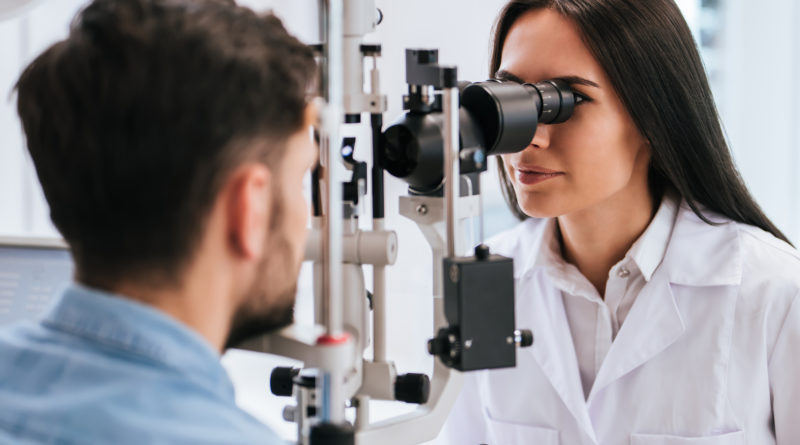Everything You Should Know About Eye Exams
1,120 total views, 1 views today
In 1989, National Eye Exam Month, which takes place annually during August, was founded to encourage people to get more frequent eye exams. Even people with 20/20 or higher vision (20/10 vision does exist) should see an eye doctor with some regularity, especially in the modern era of omnipresent screens, because the blue light these screens give off can degrade your eyesight over time.
Below, find some reasons to see an eye doctor, how frequently you should have your eyes examined, some basic info on a common vision test known as pupillary dilation, and factors to help you decide, if you’re found to need a visual aid, whether you should choose contact lenses or glasses.
Many people are nearsighted
Eyes are among the most commonly flawed organs in humans. Somewhere between 30 and 40 percent of the global population has myopia, commonly known as nearsightedness. People with myopia struggle to clearly see distant text and objects – for example, a person with 20/40 vision can clearly see something within 20 feet that the “standard” eye can clearly see within 40 feet.
Glaucoma detection is better done early
Glaucoma results in permanent vision loss, and it tends to do so with little warning. Glaucoma is among the more challenging eye diseases to detect, but certain factors such as high eye pressure may suggest that a person is more prone to glaucoma later in life. These factors are only possible to find in an eye exam – standard vision screenings do nothing to look inside the eye and identify potential long-term concerns.
Pupillary dilation, what it is, and how often you should do it
Many procedures and tests common to ordinary medical exams exert minimal impact on your everyday life. Pupillary dilation, however, blurs your vision for a few hours, effectively preventing you from driving and reading. It’s nevertheless a vital test for early detection of your potential to encounter glaucoma, diabetes, high blood pressure, retinal detachment (a painless but urgent, potentially blinding malady), and macular degeneration (age-related vision loss).
Since pupillary dilation temporarily alters your vision, it is not recommended that you opt for it every single eye doctor visit. It’s recommended just occasionally for anybody under 40 years old. Above that age, people of color, who tend to be at higher risk for glaucoma, should undergo pupillary dilation every two years. All people 60 years of age and older should do so yearly.
How often you should see an eye doctor
For most adults, eye exams are not required every single year. For African-American people ages 20-64, eye exams are recommended every two to four years, as they are for Caucasian people ages 40-64. For Caucasian people ages 20-39, eye exams are recommended every three to five years. All people age 65 and older should see an eye doctor annually, as should children, who are especially susceptible to developing myopia.
How to decide between glasses and contact lenses
If upon your latest eye exam, your doctor tells you that you need contact lenses or glasses, you’ll need to decide which option you prefer. Glasses are generally easier to clean and maintain than contact lenses are, and they pose far less potential to damage your eyes if not well-cleaned or maintained. They’re also recommended for people who frequently use computers and screens as work, as glasses more strongly prevent the dry eyes and irritation common with prolonged screen use than contact lenses do.
Contact lenses may be more suited for active people, who can move around with contact lenses and not worry about their glasses falling off. Similarly, contact lenses offer unobscured vision, whereas sweat, not to mention dust and ordinary fingerprints, can stain glasses at least temporarily. Contact lenses also don’t fog upon temperature or humidity shifts as glasses do.
How do you take care of your vision? Share your experiences in the comments!

